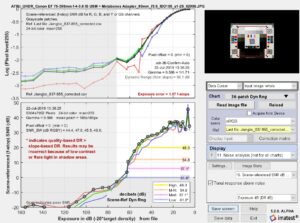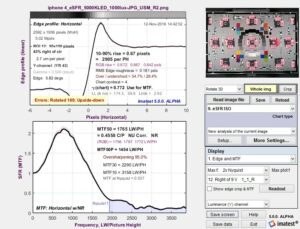The IEEE 1858 working group for Camera Phone Image Quality has produced two revisions of its Camera Phone Image Quality (CPIQ) standard. This standard focuses on Perceptual Image Quality, which relies on psychophysical studies to quantify how and to what degree image quality degradation is noticeable to a human observer.
The IEEE 1858 working group is looking to develop additional metrics to understand further what makes a good-quality image. The development of psychophysical studies is also required to complete the 1858-2023 video quality metrics.
 Local Contrast / HDR: A high dynamic range (HDR) scene will need to have local tone mapping applied in order to present it on a lower dynamic range display. Local tone mapping (LTM) may be modeled to emulate the adaptive perception of the human visual system. If not applied optimally, this processing can lead to the loss of mid-tones or an increase of perceptible anomalies. This process is complicated by the proprietary nature of many of the processing algorithms. The IEEE 1858 working group seeks to create a method of characterizing the perceptual quality of these local contrast-enhancing image processing techniques.
Local Contrast / HDR: A high dynamic range (HDR) scene will need to have local tone mapping applied in order to present it on a lower dynamic range display. Local tone mapping (LTM) may be modeled to emulate the adaptive perception of the human visual system. If not applied optimally, this processing can lead to the loss of mid-tones or an increase of perceptible anomalies. This process is complicated by the proprietary nature of many of the processing algorithms. The IEEE 1858 working group seeks to create a method of characterizing the perceptual quality of these local contrast-enhancing image processing techniques.

Sharpening Artifacts: For images prepared for presentation to humans, sharpening is typically part of the image processing pipeline. This processing can lead to visible “halo” artifacts around edges which will appear differently depending on the amount of oversharpening applied and the radius of the halo artifact. The IEEE 1858 working group seeks to determine the threshold of noticeability, impact on visual quality, and uncanniness that can be side effects of high levels of sharpening in order to guide the creation of more optimal image processing pipelines in the future.
Examples of unsharpened and oversharpened image processing (source: Henry Dietz Quora):
Unsharpened image |
Oversharpened Image |
Video Visual Noise: The IEEE 1858 working group would like to determine the temporal impacts of noise to extend the still-image-based visual noise metrics from 1858-2016.
Video Jitter JND: IEEE 1858-2023 introduced a new jitter measurement for video. The IEEE 1858 working group seeks to determine the noticeability of jitter in real or simulated video recordings and transmissions.
The IEEE 1858 working group is interested in connecting and collaborating with companies and research organizations interested in contributing to designing and conducting psychophysical research. This effort will advance the understanding of the human visual system.
Please contact [email protected] if you are interested in participating.


